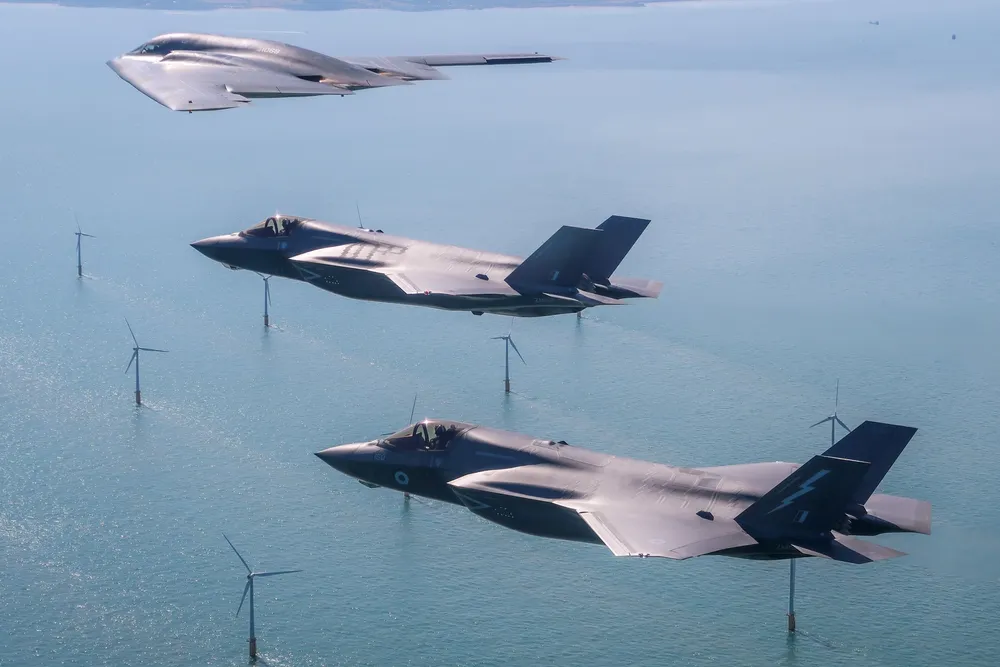RWE made to sweat over radar concerns for huge UK offshore wind project
There are 'frustrations and uncertainties' regarding radar mitigation for offshore wind projects, including that being developed by RWE and Emirati renewable energy giant Masdar, said lawyer

RWE has been made to sweat over whether it will be allowed to power up its planned Dogger Bank South offshore wind farm until next-gen technology to stop it interfering with radar has been procured through an ongoing UK military programme.
Concerns about how offshore wind farms can interfere with radar systems, including military installations crucial to detecting hostile aircraft, are becoming increasingly prevalent in the industry as more huge arrays are planned.
These concerns extend to the Dogger Bank South project that German power giant RWE is developing in two 1.5GW phases – East and West – in the British North Sea. The project, which Emirati renewables giant Masdar holds a minority stake in, is around 120km away from the Staxton Wold radar station run by the UK Royal Air Force.
It agreed to wording in a draft development consent order (DCO) that no turbine forming part of Dogger Bank South West would be allowed to start spinning its blades until energy secretary Ed Miliband, having consulted with the MoD, confirms that “appropriate mitigation will be implemented and maintained for the life” of the project.
However, in a 5 June planning hearing for Dogger Bank South, the examining authority pressed RWE on the exact meaning of this wording – specifically, whether it means this mitigation will have to be implemented before Dogger Bank South West can begin operation.
Why do wind turbines affect radar systems?
Radar works by firing out radio waves that bounce back off objects, revealing their position. Radar systems can filter out static objects like buildings that cause interference – but moving turbine blades are much more difficult. The interference and false returns the blades cause makes it harder for militaries to detect a hypothetical Russian fighter jet, or missile.
The Defence Infrastructure Organisation, a branch of the MoD managing this issue, confirmed last month that the delivery schedules for Programme Njord, which launched in 2023, are “not yet known as the competition is live.”
“Until the tender process has concluded which includes: evaluation of all potential bids; the identification of a preferred solution (assuming there is one); and then all requisite approvals; and contract award) the delivery dates will be unknown or subject to change.”
The MoD has said it would consider a “stop gap” mitigation on a “case-by-case basis” with developers seeking to operate their wind farm before any Njord solution is in place.
‘Frustrations and uncertainties’ over radar mitigation
At the planning hearing, Julian Boswall, a planning partner at Burges Salmon representing RWE, stressed that the wording on radar mitigation in the draft DCO has been agreed on with the MoD. The utility is “extremely reluctant to change wording,” he said, “because it's extremely hard to get engagement with the MoD.”
This point was neatly encapsulated by the fact the MoD had been due to attend the hearing in question but was ultimately a no-show.
“If we were to change that wording now, I suppose we can't guarantee that agreement would be reached on any revised wording by the close of examination,” said another RWE representative.
Boswall continued that RWE has a vested interest in “needing and wanting confidence that we can proceed for commercial reasons and for policy target reasons”.
The examining authority, however, insisted they would like RWE to consider whether the mitigation needs to be up and running before Dogger Bank South West, which is closest to Staxton Wold and therefore the biggest problem, can power up.
The examining authority noted that a DCO RWE recently secured for the Rampion 2 wind farm off the English south coast contains a requirement that it will not be built until the proposed radar mitigation scheme has been implemented.
Boswall insisted that the Rampion 2 situation is “different” as there “aren’t military radars involved,” although it was left unclear what the significance of that would be.
An RWE representative said that there were interim solutions that it could consider for radar mitigation, although the developer may not be able to reveal details of these due to national security concerns.
The examining authority also questioned what would happen if radar mitigation procured were to “fail” during the operation of the wind farm, and whether RWE would consent to switching off turbines in this instance.
RWE expects this scenario “would be addressed in the context of whatever detail is signed off when the actual measure is agreed,” said Boswall.
He continued that the MoD and broader government, including the Prime Minister’s office, has put in an “enormous” amount of work on radar mitigation.
“We are simply one of a number of developers who are playing our part in continuing to address a problem that exists in relation to two very important policies. On the one hand, protecting the country and national security. On the other hand, bringing forward large-scale renewables development on an aggressive timeline.”
“Yes, there are some frustrations. Yes, there are some uncertainties along the way, but this continues to be a highly credible and deliverable model”.